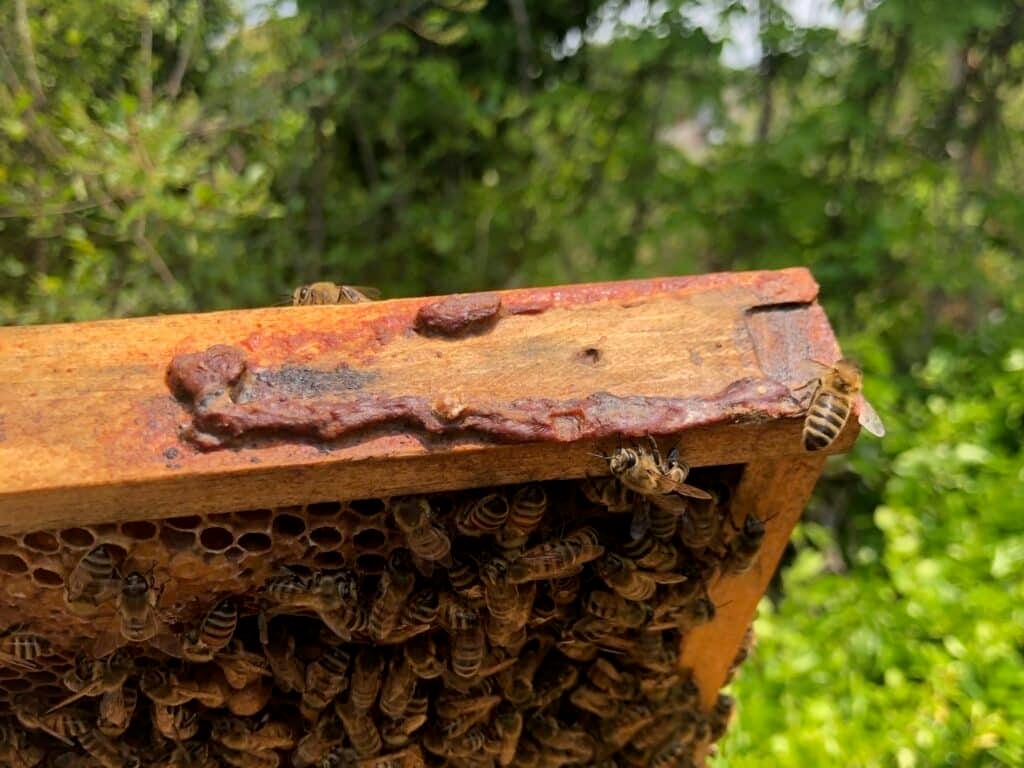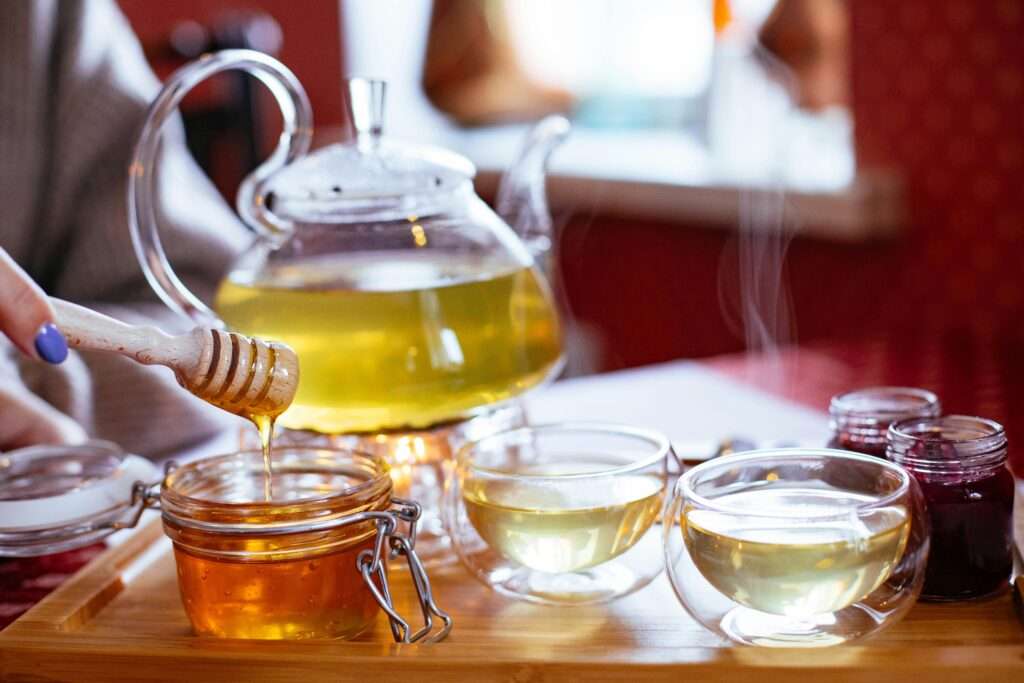Overview of Apitherapy and Bee Venom Therapy
Bee venom therapy, also known as apitherapy, represents a fascinating intersection between traditional healing practices and modern medical research. This therapeutic approach involves the deliberate application of bee venom through various methods, including the controversial practice of live bee acupuncture where practitioners apply bees directly to specific acupuncture points on the body.[1][2]
The practice combines the ancient principles of traditional Chinese medicine with the biological properties of bee venom, creating a unique therapeutic modality that has gained attention particularly in Korea and other parts of the world. Dr. Osvaldo Mihura, a 77-year-old physician in Buenos Aires, stands as a notable example – he maintains 26 beehives and has practiced apipuncture (acupuncture using live bees) for over 30 years.[2][3]
The Science Behind Bee Venom
Bee venom, or apitoxin, is a complex biological substance containing numerous bioactive compounds that contribute to its therapeutic potential. The key components include:[4][1]
Primary Peptides:
- Melittin – The major component comprising 40-60% of bee venom, exhibiting potent anti-inflammatory properties when used in controlled doses[5][6]
- Apamin – A peptide with neuroprotective effects that may contribute to pain relief[3][1]
- Adolapin – Another peptide with anti-inflammatory properties[7]
Enzymes:
- Phospholipase A2 – An enzyme that can be both anti-inflammatory in low concentrations and pro-inflammatory in higher doses[1][3]
- Hyaluronidase – Facilitates the spread of other venom components through tissues[5]
Additional Compounds:
- Histamine – Associated with immune responses and inflammation[4][1]
- Various bioamines and catecholamines that contribute to the venom’s pleiotropic effects[5]
Mechanisms of Action
Anti-inflammatory Effects
Research has revealed sophisticated mechanisms through which bee venom exerts its anti-inflammatory effects. The venom works by:[5]
- Inhibiting NF-κB pathways – Bee venom prevents the nuclear transcription factor NF-κB from binding to DNA by stabilizing IκBα protein and preventing p50 translocation to the nucleus[5]
- Reducing pro-inflammatory cytokines – Studies show decreased production of TNF-α, IL-6, IL-8, and interferon-γ[6][5]
- Suppressing inflammatory enzymes – Downregulation of COX-2, iNOS, cPLA2, and IL-1β genes[5]
- Modulating immune responses – The venom can both stimulate and regulate immune system activity depending on dosage and application[8][4]
Pain Relief Mechanisms
The analgesic properties of bee venom appear to involve multiple pathways:[5]
- α2-adrenergic receptor activation – Studies using receptor antagonists have shown this pathway is crucial for pain relief[5]
- Counter-irritation effects – The application of noxious stimuli (bee stings) can increase pain thresholds and reduce pain perception[3]
- Neuroprotective effects – Compounds like apamin may directly affect nerve sensitivity and pain transmission[1][3]
Clinical Applications in Arthritis Treatment
Rheumatoid Arthritis
Clinical research has shown promising results for bee venom therapy in treating rheumatoid arthritis (RA). A systematic review of clinical trials found that bee venom acupuncture was effective in reducing:[9][4][3]
- Number of painful and swollen joints[3]
- Morning stiffness duration[3]
- Inflammatory markers in blood tests[3]
- Overall improvement in quality of life measures[3]
Animal studies have demonstrated that bee venom can suppress the development of adjuvant-induced arthritis in rats, with effects similar to conventional medications like methotrexate. The therapeutic mechanism appears to involve:[9][8]
- Reduced synovial inflammation – Bee venom can induce apoptosis in rheumatoid synovial cells[5]
- Decreased cartilage destruction – Inhibition of matrix metalloproteinases that break down joint cartilage[5]
- Enhanced drug efficacy – When combined with methotrexate, bee venom enhanced anti-arthritic effects while reducing drug toxicity[5]
Osteoarthritis
For osteoarthritis, bee venom therapy has shown effectiveness in clinical trials. Research indicates:[10][9][3]
- Pain reduction – Significant decreases in joint pain scores compared to control groups[3]
- Improved function – Enhanced mobility and daily activity performance[3]
- Reduced inflammation – Decreased local inflammatory markers measured through infrared thermography[3]
Studies comparing bee venom acupuncture to traditional acupuncture found that bee venom treatments were more effective than needling alone.[3]
Methods of Administration
Live Bee Acupuncture
This controversial method involves using live bees directly applied to acupuncture points. The process typically includes:[2][1]
- Bee handling – Practitioners use forceps to hold the bee and guide its stinger to specific acupuncture points[2][1]
- Controlled stinging – The bee is allowed to sting the patient, after which the stinger is carefully removed[1]
- Humane considerations – Many practitioners, like Dr. Mihura, kill the bees after use to prevent unnecessary suffering, as bees die naturally after stinging[2]
Processed Venom Injections
More commonly, practitioners use:
- Purified venom extracts – Collected and processed bee venom mixed with carrier solutions[1][3]
- Acupuncture point injection – Diluted venom injected at specific acupuncture points[7][3]
- Standardized dosing – Controlled concentrations to minimize adverse reactions while maintaining therapeutic effects[3]
Safety Considerations and Risks
Serious Adverse Events
The most significant concern with bee venom therapy is the risk of severe allergic reactions. A tragic case reported in Spain involved a 55-year-old woman who died from multiple organ failure after receiving live bee sting acupuncture for two years. This case highlighted several critical safety issues:[11][12][13]
- Sudden sensitivity development – Individuals can develop allergies even after years of successful treatment[11]
- Anaphylaxis risk – Life-threatening systemic allergic reactions can occur without warning[12][10]
- Emergency preparedness – The need for immediate epinephrine availability during treatments[11]
Risk Statistics
A comprehensive systematic review found concerning safety data:[13][12]
- Adverse event frequency – Median of 28.87% of patients experienced some form of adverse reaction[12]
- Increased risk – Bee venom acupuncture showed 261% increased relative risk for adverse events compared to saline injection[12]
- Common reactions – Skin reactions including itching, swelling, and rash were most frequent[14][15]
Contraindications
Medical experts identify several groups who should avoid bee venom therapy:[16][10]
- Known bee sting allergies – Absolute contraindication due to anaphylaxis risk[10]
- Autoimmune diseases – May worsen conditions like multiple sclerosis or lupus by stimulating immune system[10]
- Pregnancy – High doses may cause uterine contractions and miscarriage risk[10]
- Immunocompromised patients – Those taking immunosuppressive drugs may experience unpredictable reactions[16]
Regulatory and Practice Standards
Professional Training
The practice of live bee acupuncture requires specialized training that combines:
- Traditional acupuncture knowledge – Understanding of meridian systems and point locations[2]
- Bee handling expertise – Safe management of live bees and hive maintenance[2]
- Medical emergency preparedness – Training in anaphylaxis recognition and treatment[11]
Practice Variations Worldwide
Different countries have varying approaches:[7][2]
- Korea – Most research and clinical practice, with standardized protocols[14][3]
- Argentina – Individual practitioners like Dr. Mihura maintain personal apiaries[2]
- United States – Limited practice with emphasis on safety protocols[17][16]
Current Research Status
Clinical Evidence Quality
While showing promise, the evidence base for bee venom therapy has limitations:[15][14][3]
- Small study sizes – Most clinical trials involve relatively few participants[15][14]
- Short follow-up periods – Limited data on long-term effects and delayed adverse reactions[15]
- Variable protocols – Inconsistent dosing, frequency, and administration methods across studies[12][3]
- Geographic bias – Majority of research conducted in Korea, limiting generalizability[14][15]
Research Recommendations
Scientists call for:[14][15][3]
- Larger randomized controlled trials – To establish statistical significance and clinical relevance[14]
- Standardized protocols – Consistent dosing and administration methods[3]
- Long-term safety monitoring – Extended follow-up to identify delayed adverse events[15]
- Mechanistic studies – Better understanding of how bee venom components work[5]
Future Directions
Refined Treatment Approaches
Researchers are exploring ways to improve safety while maintaining efficacy:[18][7]
- Purified venom components – Isolating beneficial compounds while removing allergens[7]
- Synthetic alternatives – Laboratory-created versions of therapeutic peptides[5]
- Combination therapies – Using bee venom to enhance conventional treatments while reducing their side effects[5]
Emerging Applications
Beyond arthritis, research is investigating bee venom for:[7][5]
- Neurological conditions – Parkinson’s disease, multiple sclerosis, and stroke recovery[7][14]
- Cancer therapy – Anti-tumor properties of certain venom components[5]
- Skin conditions – Treatment of inflammatory dermatological diseases[5]
Conclusion
Live bee acupuncture and bee venom therapy represent a unique confluence of ancient wisdom and modern scientific inquiry. While research demonstrates genuine anti-inflammatory and analgesic properties that may benefit arthritis patients, the practice carries significant risks that cannot be overlooked.
The tragic case of the Spanish woman who died from bee sting acupuncture serves as a sobering reminder that even traditional therapies can have serious consequences.[13][11][12]
For patients considering this treatment, the decision should involve careful consultation with qualified medical professionals who can assess individual risk factors and ensure proper safety protocols. The practice requires practitioners with specialized training in both traditional acupuncture and emergency medical response.
As research continues to refine our understanding of bee venom’s therapeutic mechanisms, the future may hold safer, more standardized approaches that preserve the benefits while minimizing the risks of this ancient healing art.[18][11]
⁂
- https://www.japitherapy.com/japitherapy-articles/bee-acupuncture-navigating-the-sting-of-traditional-medicine-104066.html
- https://globalpressjournal.com/americas/argentina/blending-treatments-argentine-doctor-performs-acupuncture-with-live-bees/
- https://pmc.ncbi.nlm.nih.gov/articles/PMC1062163/
- https://www.japitherapy.com/japitherapy-articles/bee-venom-for-arthritis-natures-sting-against-joint-pain-104067.html
- https://pmc.ncbi.nlm.nih.gov/articles/PMC11434713/
- https://pmc.ncbi.nlm.nih.gov/articles/PMC6720840/
- https://pubmed.ncbi.nlm.nih.gov/30268393/
- https://pmc.ncbi.nlm.nih.gov/articles/PMC9965945/
- https://www.medicalnewstoday.com/articles/bee-stings-for-arthritis
- https://www.webmd.com/vitamins/ai/ingredientmono-972/bee-venom
- https://www.cnn.com/2018/03/22/health/bee-sting-acupuncture-kills-woman-diagnosis-unusual
- https://journals.plos.org/plosone/article?id=10.1371%2Fjournal.pone.0126971
- https://pmc.ncbi.nlm.nih.gov/articles/PMC4440710/
- https://pubmed.ncbi.nlm.nih.gov/32872552/
- https://pmc.ncbi.nlm.nih.gov/articles/PMC7551670/
- https://www.powershealth.org/about-us/newsroom/health-library/2023/09/02/bee-venom-therapy-what-it-is-benefits-safety-side-effects-drug-interactions
- https://www.ebsco.com/research-starters/health-and-medicine/bee-venom-therapy
- https://pmc.ncbi.nlm.nih.gov/articles/PMC9415809/



